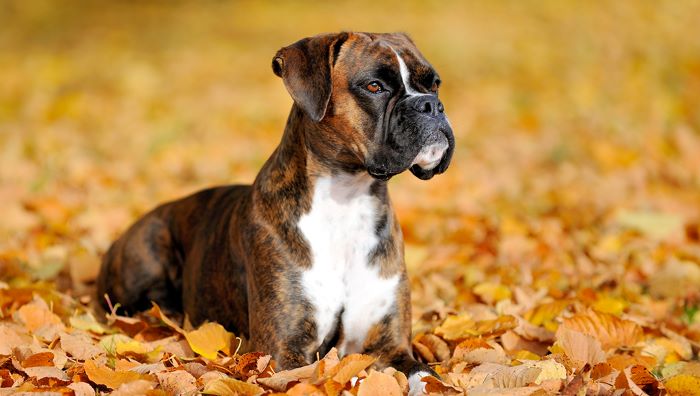The boxer is an energetic, fun-loving dog breed that originated in Germany in the 19th century. Initially used as guard dogs and to hunt large game, boxers later became popular family companions due to their affectionate and loyal nature, especially with children. In this article we talk about Best Training Techniques for a Well-Mannered Boxer.
However, without proper training and socialization from a young age, a boxer’s exuberance and strength can become problematic. They need firm guidance and positive reinforcement training to learn good manners and become well-adjusted canine citizens. With consistency, patience and the right techniques, you can mold your boxer puppy into an obedient and polite adult dog.
Table of Contents
Start Training Early On

Experts recommend starting your boxer’s training as early as 7-8 weeks old when you first bring them home. Puppies have a short attention span but you can begin teaching basic commands like “sit”, “stay”, “come” and “down” using treats and lots of praise. Keep training sessions very short, about 5 minutes or so. Be very patient and consistent with young boxers.
Continue socialization and exposure to new sights, sounds, people and other dogs. Well-socialized boxer puppies grow into more confident and balanced adult dogs. Avoid using harsh corrections or punishment which can make boxers nervous or overly aggressive. Use positive reinforcement training methods instead.
Obedience Training Is Essential
Formal obedience training is extremely important for boxers between 4-6 months old. By this age they need to learn how to properly walk on a leash, obey commands consistently, and control their exuberance around people and other dogs. Group classes with a professional trainer teaches essential skills and also socializes your pup.
Train your boxer to heel and not pull on their leash, which takes time and consistency. One effective technique is to stop walking whenever they start to pull, then continue only when the leash is loose again. Pairing commands like “heel” with treats when they walk properly will help reinforce this behavior. Teaching impulse control is also very important.
Curb Jumping & Unwanted Licking
Two annoying boxer behaviors that must be curbed are jumping on people and excessive, uncontrolled licking. Start discouraging your boxer puppy from jumping through verbal corrections and by ignoring them until all four paws are on the floor again. Reward them with attention only when they are calm. You can also teach them to sit politely for greetings instead.
To reduce unwanted face-licking, teach your boxer the “kiss” command so they know when licking is appropriate. Any time they try to lick without permission, say “no kiss” firmly. Redirect their energy by asking for a basic command they know well, like “sit”, then praise them for compliance. Be very consistent in order to extinguish the behavior.
Advanced Training Is Beneficial
After your boxer completes basic obedience training, consider advanced classes like agility, nose work or additional behavioral training. These challenging activities provide needed mental stimulation and strengthen your bond. Agility training allows them to burn off energy in a constructive way as they navigate obstacle courses and execute tricks.
Refresher courses or one-on-one sessions with trainers can also help reinforce obedience if your boxer starts exhibiting problem behaviors again. Boxers can be stubborn and easily distracted, so ongoing training helps manage these tendencies. Make sure everyone interacts with your boxer the same way when asking for commands to avoid confusion.
Proper Exercise Is Crucial
Providing adequate exercise is key to having a well-behaved boxer in your home. Long daily walks, play sessions, or allowing them to run safely off-leash in fenced areas helps expend pent-up energy. Tired boxers tend to be less destructive, restless or hyper. Interactive toys can also stimulate them mentally when weather prohibits outdoor activity.
In addition to physical activity, boxers need lots of quality time and interaction with their families. A bored, lonely boxer may develop anxiety or bad habits like chewing, digging or barking to self-soothe. Prevent this by actively engaging with your boxer daily through training sessions, games and cuddle time.
Use Rewards & Corrections Judiciously
Show your boxer what behaviors earn rewards and which result in corrections or denial of attention. For example, when they obey a command properly, offer excited praise immediately paired with a treat. If they jump on someone, issue a firm “Off!” and ignore them for a few minutes. Be consistent so they can understand expectations.
However, take care not to overuse treats since this diminishes their effectiveness. Also avoid harsh reprimands, especially physical punishment, which will erode your boxer’s trust in you. Correct problem behavior calmly yet firmly, in a way they comprehend. Patience during the training process cannot be overemphasized with a breed as energetic as the boxer.
A Well-Mannered Boxer Equals Responsible Ownership
With dedicated training, proper socialization, adequate exercise and responsible ownership, a boxer will mature into polite, obedient dog who respects you and other people. This prevents them becoming unruly, destructive or even dangerous.
The key is starting training early and staying consistent over their lifetime. Seek professional advice if your boxer displays unwarranted aggression, extreme anxiety or other aberrant tendencies. With time, positive reinforcement and patience, you can channel your boxer’s lively temperament into appropriate outlets.
The well-trained boxer that masters good manners is a pleasure to own – an affectionate, fun-loving family companion. Putting in the effort during their formative years means you’ll reap the rewards of living with a friendly, confident and obedient boxer for many years to come. Your dog will live a happier, more fulfilled life as well. I sincerely hope you find this “Best Training Techniques for a Well-Mannered Boxer” article helpful.

Dr. Kate Bruce is a highly experienced veterinarian with a Master’s degree in Veterinary Medicine and over a decade of expertise in animal behavior and holistic pet care. She combines traditional and modern practices to offer exceptional advice on pet health and wellness. Explore more at petsconsultancy.com and follow her on Instagram for expert tips.









